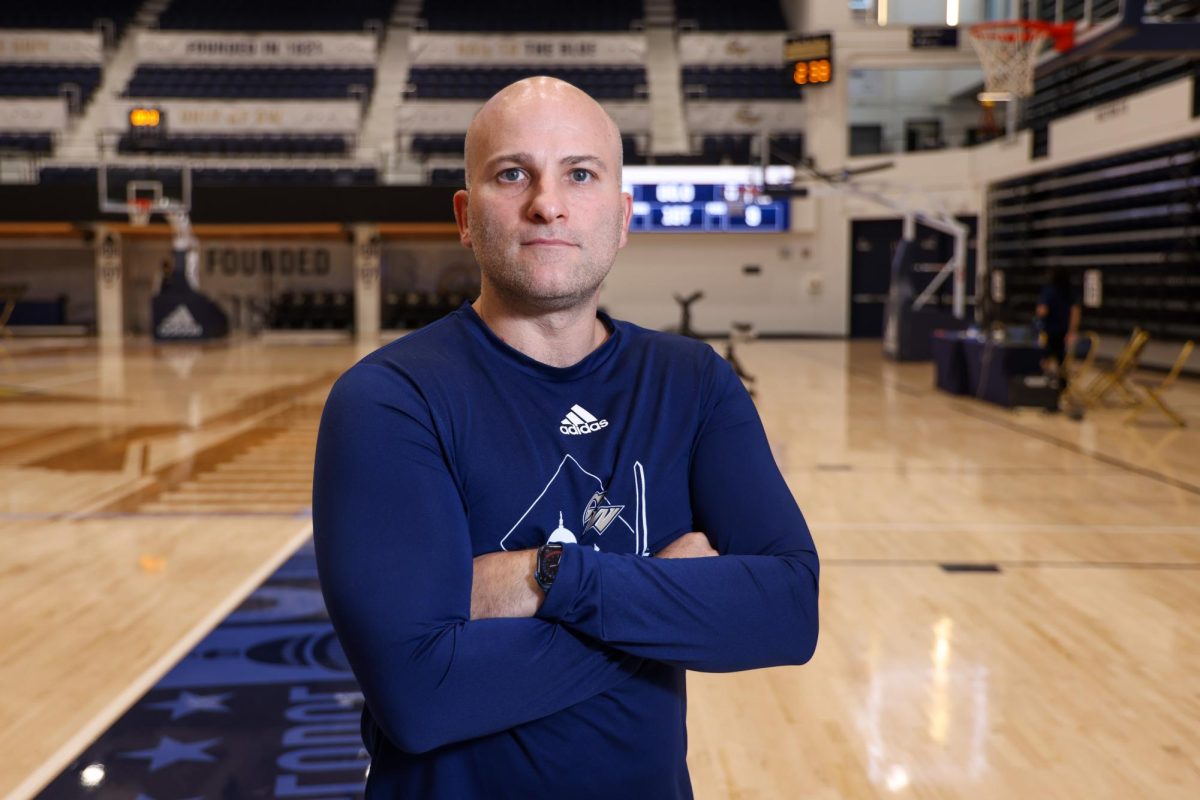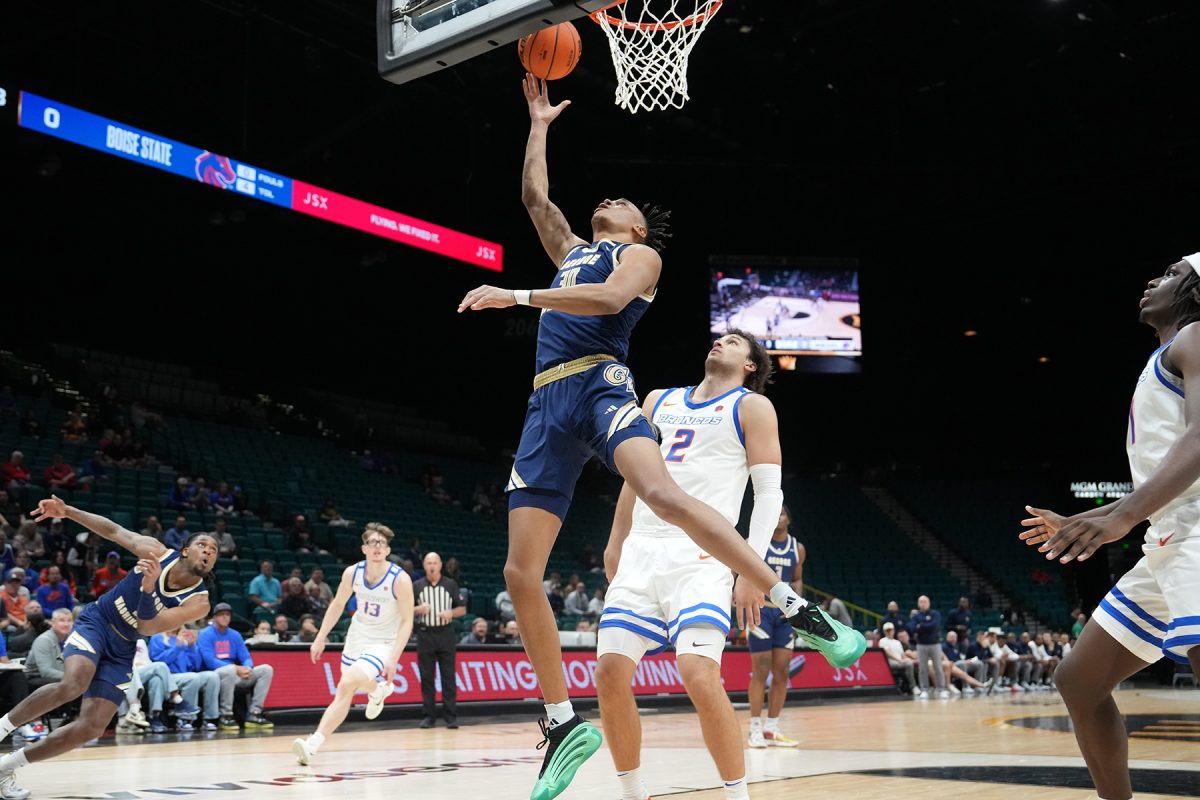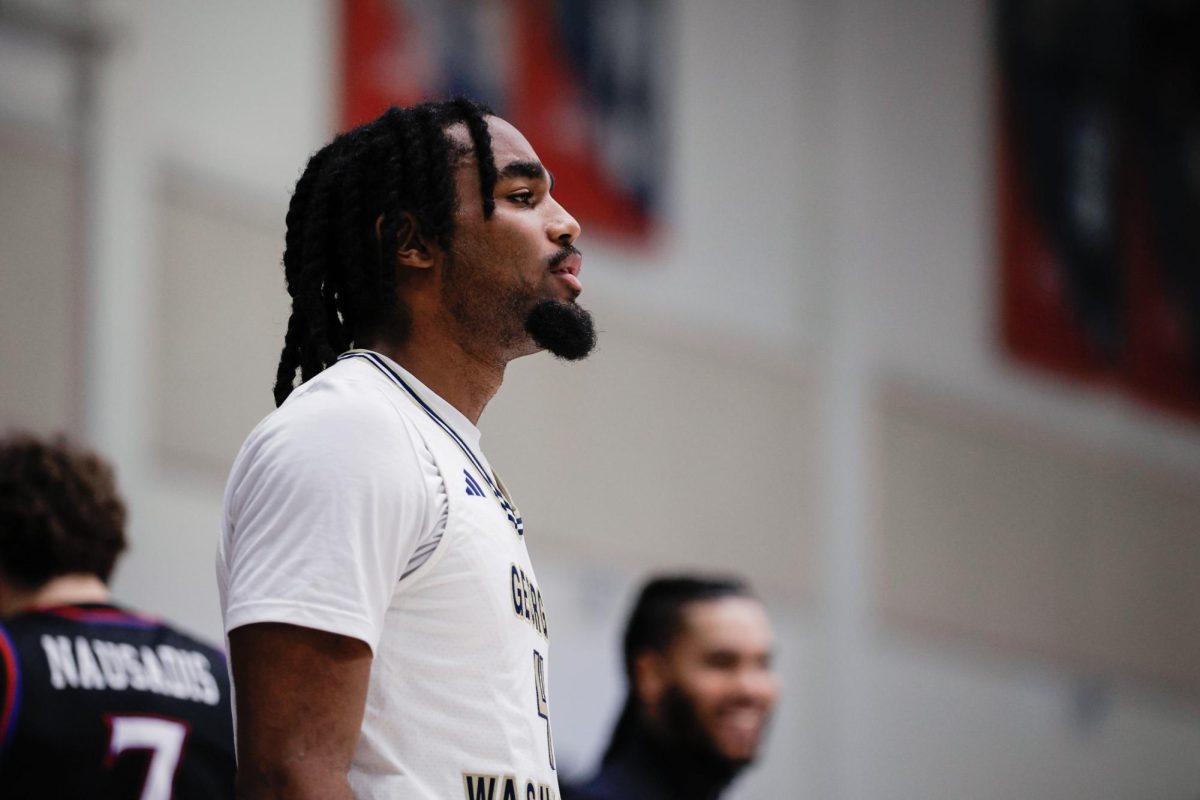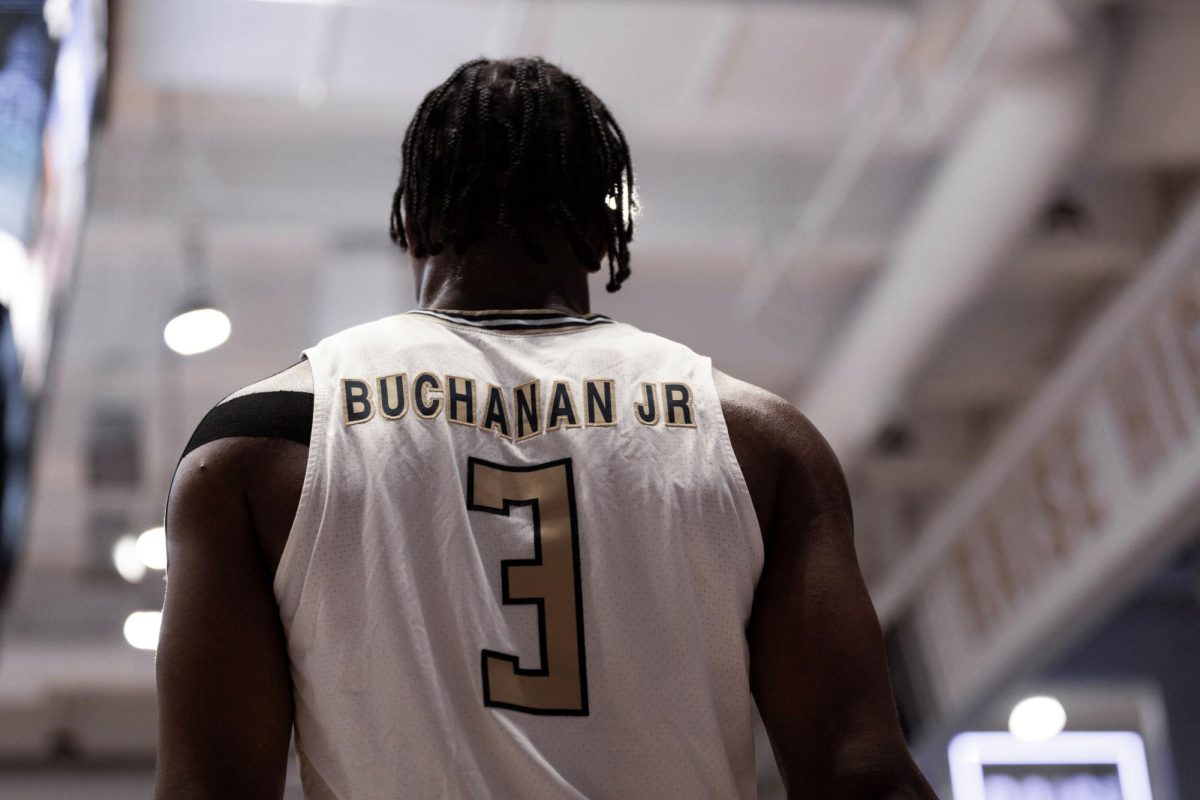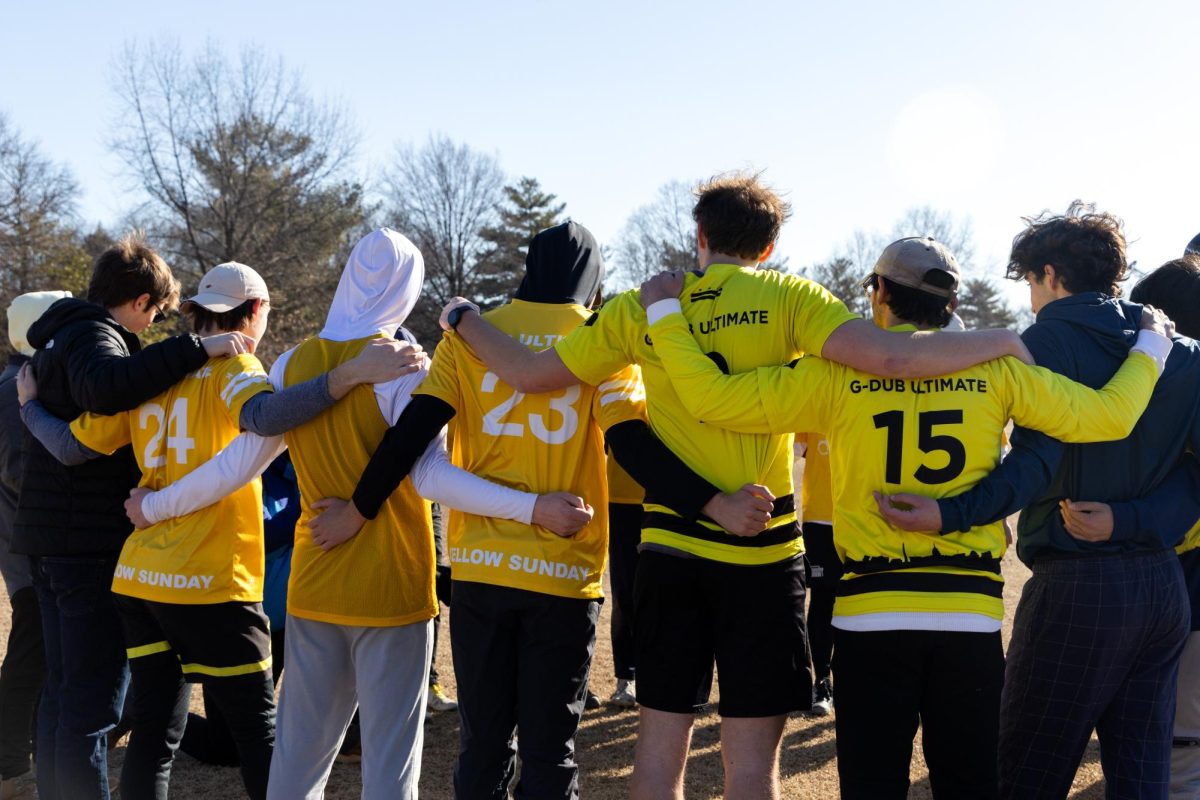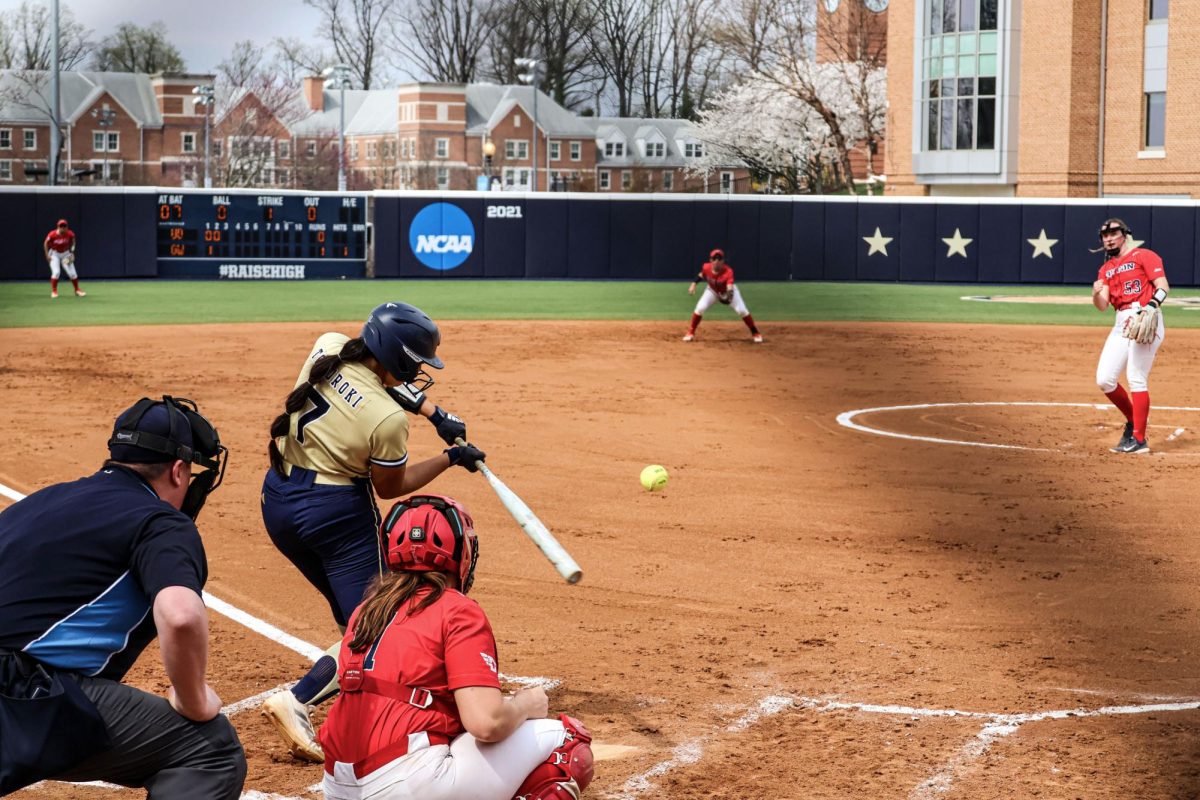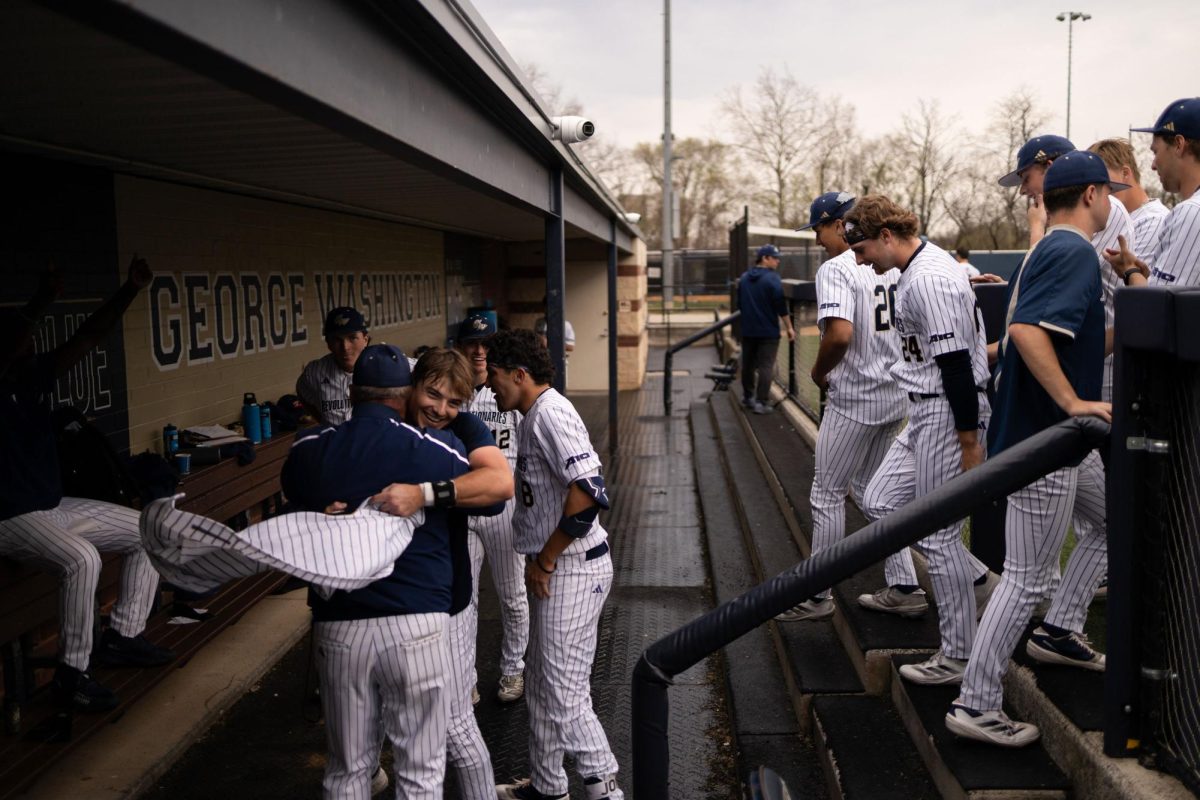Atlantic 10 officials released the men’s basketball schedule for the upcoming season Tuesday, and Head Coach Chris Caputo said he expects his team to bounce back after a rocky conference record last season.
The Revs kick off the season with a face-off against Richmond on Dec. 31, the start of a total of 18 games against A-10 opponents, with an even split of nine home games and nine away games. GW finished last in the A-10 with a 4-14 conference record last season and was eliminated from the A-10 Tournament with a 61-60 loss to La Salle.
Despite starting the last conference season 3-1, a 12-game losing streak would sink the Revs to the bottom of the rankings. Caputo said in an interview that this year’s team is looking to improve on their conference play struggles. Last season, the Revs went 11-3 in out-of-conference play before a 4-14 conference record saddled the team with an overall 15-17 record.
Caputo said the record in A-10 play could be attributed to the handful of players dropping to injuries and that his team was in a good spot before their slew of bad luck, which began with an injury to redshirt sophomore Garrett Johnson.
“What changed for us is when Garrett [Johnson] deteriorates,” Caputo said. “We have to shut him down. At the same time, Darren gets hurt. We’re going into games with six guys in league play.”
GW’s home A-10 slate will tip off Jan. 4 with a matchup against the Dayton Flyers, who finished last season ranked 24th in the country according to a ranking from the Associated Press and received an at-large bid to the NCAA tournament.
“They’re gonna be well coached, they’ve got a talented group, and we’ve got to do a great job preparing for the first home game in the league,” Caputo said of the Flyers.
The Revs will host Duquesne on Jan. 15, marking the return of junior guard Maximus Edwards, who transferred to the reigning A-10 champion this spring after two seasons with GW. The Dukes defeated Brigham Young University 71-67 in the first round of the NCAA tournament last season before falling to University of Illinois 89-63 in the second round.
Caputo said he hopes the student body will be in full force when returning from winter break in January to attend the first game against the Dukes.
“We want a great environment here,” Caputo said. “My hope is that we’ve created excitement to that point and we have a great student turnout.”
In February, the Revs will host George Mason in the second edition of the Revolutionary Rivalry. GW won their home matchup against the Patriots last season, which brought the team to 14-3.
GW will travel north to visit St. Bonaventure on Feb. 9 for its lone matchup with the Bonnies. A win against the Bonnies in March broke GW’s 12-game losing streak last season. The following week, the Revs will host VCU on Feb. 12, after the Rams concluded an 11-7 A-10 record, giving them a 24-14 overall record.
Closing out play in February, the Revs will visit Loyola University Chicago on Feb. 26. The Ramblers, who joined the conference in 2022, were the first seed in the 2023-24 A-10 Tournament after finishing with a 15-3 record.
The Revs’ final home game is March 1, when they will welcome La Salle to the Smith Center. GW’s 2024-25 season concludes with their only game against Fordham on March 5. Last season, the Rams ended their league play 6-12.
Caputo said that he considers many goals, like trying to make the A-10 a two-plus-bid league, when creating his team’s out-of-conference schedule. In the NCAA, all 31 Division I conferences receive an automatic bid to the winner of their respective tournaments. Teams can also receive an at-large bid, which are determined by factors including record, strength of schedule and conference prestige.
Caputo said he believes that in order to make the A-10 a two-bid conference, each team would need to win around 80 percent of their out-of-conference games. Last season, the Revs won 78 percent of their out-of-conference games, holding their weight for a conference that received two bids last year in Dayton and Duquesne. Fox College Hoops’ Mike Decourcy even projected GW near the bubble for the NCAA Tournament in December 2023, when the Revs boasted a 10-2 record.
The Revs play eight of their 13 nonconference games at the Smith Center this season. Three of the five remaining will be played in the U.S. Virgin Islands, and the other two at American and Old Dominion universities.
“You gotta have home games,” Caputo said. “You gotta have a percentage of those games played at home. Because that’s the best chance to get you to 80 percent is to play more home games.”
Caputo said that the program buys games to try to reach the desired 80 percent, and he and his staff reaches out to teams to schedule home and home matchups to both achieve that goal and keep consistent opponents.
“You’re going to have to buy a certain amount of those games,” Caputo said. “To get those people to come play you and you’re gonna play maybe one or two home and homes. Now the problem with home and homes is you can’t totally project who will want a home and home, and so sometimes you end up on the wrong side. This year, two of our home and homes are starting on the road, whereas last year it was split.”
Last season, GW’s out-of-conference opponents, which included Hofstra University, Stonehill College and University of New Hampshire amongst others, averaged a 256.125 NCAA Evaluation Tool ranking, meaning they ranked in the bottom half of the country. Entering this season, GW’s opponent average NET stands at 324.875, which means they have a weaker out-of-conference schedule than last season.
Besides the teams scheduled for GW’s multi-team event, which includes Kansas State University and Liberty University or University of Louisiana, their highest ranked competitor is American, who ended last season at 287.
Caputo said he looks at the makeup of the Power Five conference teams when considering the Revs’ schedule. He said playing Kansas State will ensure his team faces a challenge as they start to approach A-10 play. But he said playing a loaded nonconference schedule may veer his team off the course of the desired winning percentage.
“Go play Kansas State in the MTE,” Caputo said. “In a very good MTE field and then go somewhere and play, now you’re starting to tilt it away from the idea of trying to get to 80 percent, not that you can’t win those games. But the reality is, over time, there’s a big sample size to say this is what the high major programs have been doing. The Power Five has been doing it for many, many years. And if you look at their schedules, that’s what it looks like.”
Ben Spitalny contributed reporting.


